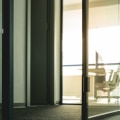Cleaning during construction is a critical aspect of any building or renovation project, ensuring that the work environment remains safe, organized, and efficient. This process involves a series of steps and practices designed to manage and remove debris, dust, and waste materials generated throughout the construction phase. Given the complexity and ongoing nature of construction work, maintaining cleanliness can be challenging but is essential for preventing accidents, ensuring worker safety, and facilitating a smoother workflow. The approach to commercial cleaning in Auckland, NZ during construction is multifaceted, requiring both proactive and reactive strategies.
Initially, it's important to establish a waste management plan. This plan should identify specific areas for waste accumulation, ensuring that debris is regularly collected and removed from the work site. By designating these areas and providing adequate disposal bins, you can minimize the spread of waste and make the cleanup process more manageable. Furthermore, implementing routine cleaning schedules is crucial. Daily or weekly cleaning, depending on the project's intensity, helps in controlling the accumulation of dust and debris, which can become hazardous if left unchecked.
Dust control is another significant aspect of cleaning during construction. High levels of dust can compromise air quality and pose health risks to workers. Strategies such as using dust barriers, sealing off construction zones from non-work areas, and employing air filtration systems can significantly reduce dust spread. For surfaces and areas already affected by dust, regular vacuuming with HEPA-filter-equipped vacuums and damp wiping can effectively minimize dust particles in the air.
Moreover, the involvement of professional office cleaning services can be an invaluable addition to any construction project. These services specialize in post-construction cleanups, which are detailed cleaning operations carried out once the construction phase is complete. They focus on removing construction debris, dusting, and thoroughly cleaning floors and surfaces to prepare the building for occupancy or the next phase of finishing work. Their expertise not only ensures a higher standard of cleanliness but also allows construction teams to focus on their core activities without being diverted by extensive cleaning demands.
Safety during cleaning is paramount. All cleaning activities during construction should adhere to safety guidelines and regulations, including the use of personal protective equipment (PPE) such as gloves, dust masks, and safety glasses. This is especially important when handling hazardous materials or working in areas with a high risk of accidents.
In addition to these strategies, effective communication and coordination among construction and cleaning crews are essential. This ensures that cleaning operations are carried out efficiently and do not interfere with construction work. By integrating cleaning into the overall project management plan, you can ensure that it complements the construction process rather than disrupting it.
In conclusion, cleaning during construction requires a well-organized approach that addresses waste management, dust control, and safety while incorporating the specialized skills of office cleaning services for post-construction needs. By adopting these strategies, construction projects can maintain a clean and safe environment, ultimately contributing to the project's success and the well-being of all involved.



